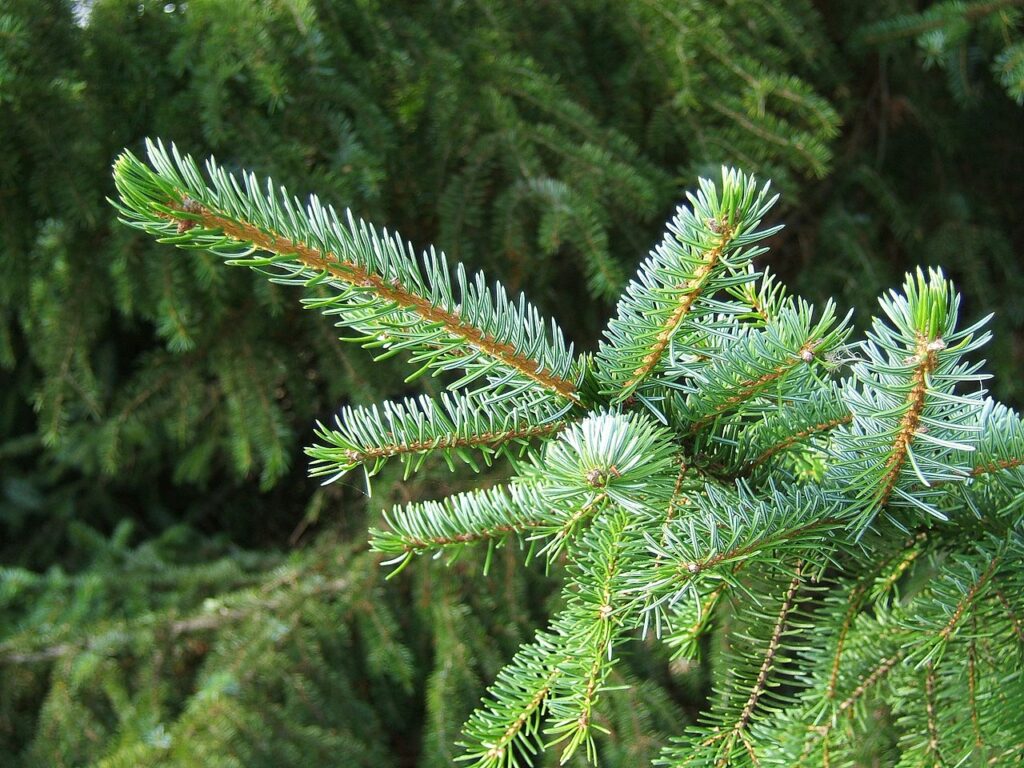
Wikimedia, CC BY 2.5
Serbia
Serbian Spruce
Picea omorika

Wikimedia, CC BY 2.5
General Description / Cultural Significance
The Serbian Spruce (Picea omorika) is an evergreen tree known for its distinctive green-to-grey ombre needles. Unlike most spruce trees, the Serbian spruce rarely sheds its needles, which can remain on the tree for up to 10 years under ideal conditions. This tree produces small purple seed cones that fall, blow away, or are eaten by birds, aiding in species dispersal.
Capable of reaching heights of up to 50 feet and widths of 20 feet, the Serbian spruce possesses tough and flexible wood, enabling it to endure the harsh winter storms of Eastern Europe. Despite its size and sturdiness, the tree has limited commercial uses, primarily serving as firewood or in construction. However, the essential oils extracted from its needles contain a variety of bioactive compounds with natural anti-inflammatory, antiviral, and antibacterial properties. Additionally, walking through a forest of Serbian spruces, with its refreshing aroma, can be both grounding and beneficial to the immune and respiratory systems, promoting overall relaxation.
In Serbia, the tree is often regarded as “majestic” and symbolizes slenderness in local folklore, particularly in the Drina River valley of western Serbia, where the species originated. Its pyramidal shape makes it a popular choice for Christmas trees during the holidays. Furthermore, its high tolerance for pollution and impressive appearance make it a favored ornamental tree for large public gardens.
Climate Change / Conservation Status
Despite its resilience and resistance to pollution, the Serbian spruce is in extreme danger of extinction due to rising average temperatures in Serbia and neighboring countries. This increase in temperature has reduced moisture levels, making the tree highly susceptible to fires. Recent fieldwork indicates a continuing decline in the extent of mature trees in Eastern Europe, where they once thrived and were not a significant concern for researchers.
Sources
Aleksic, J.M, et al. “The IUCN Red List of Threatened Species.” IUCN Red List of Threatened Species, 21 Sept. 2016, www.iucnredlist.org/species/30313/84039544.
“Serbian Spruce (Picea Omorika) Dimensions & Drawings.” RSS, Fantastic Offense, www.dimensions.com/element/serbian-spruce-picea-omorika#:~:text=The%20Serbian%20Spruce%20. Accessed 7 May 2024.
“Serbian Spruce – Picea Omorika.” Windbreak Trees, Kelly tree Farm, www.windbreaktrees.com/serbian-spruce. Accessed 7 May 2024.
Counselor, Permanent Mission of the Federal Republic of Yugoslavia to the United Nations. This statement can be found on World Sensorium original website.

